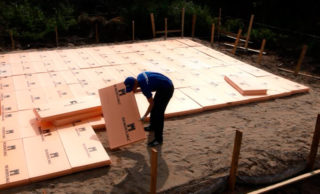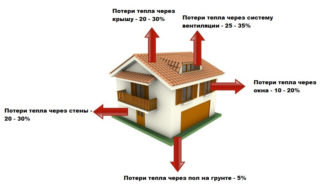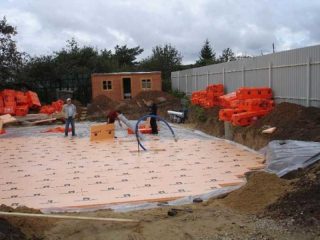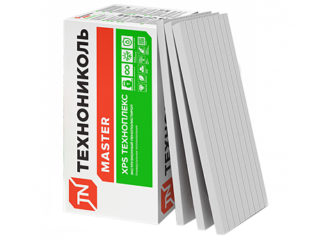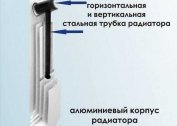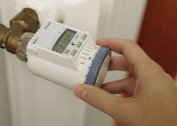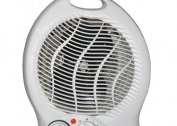For the foundation, heaving soils are especially dangerous. This structure during winter freezing can increase in size to 35 centimeters. The heaving force is so great that it can easily deform the strip foundation and lead to the destruction of the building structure. In regions with unstable soils, a monolithic reinforced concrete base is sometimes used under the entire house. Insulation of the foundation plate allows you to reduce freezing and swelling of the soil under it.
Criteria for choosing a material for insulation of the base
Insulation as applied to a monolithic plate is part of a responsible design, therefore there is a certain list of requirements for this product:
- High thermal insulation properties with a relatively small thickness should be ensured. It is important that the dew point in winter is not in the middle of reinforced concrete and does not perform destructive work, but is displaced to the insulator.
- The density of the heat barrier must be sufficient to withstand the load of not only multi-ton screed, but the entire building. Moreover, the uniformity of the structure plays an important role here - shrinkage should occur evenly.
- Not suitable for thermal insulation under the base is a hygroscopic structure that freely passes moisture through itself. In this case, the concrete will damp, fungal formations will begin to develop in it.
The world practice of building buildings using Swedish technology has shown that it is best to insulate the monolith from below with polymer structures - industrially made foam polystyrene sheets or polyurethane foam. For similar tasks, a special form of this product, called penoplex, was developed.
Why is it necessary to warm the slab foundation
There are several aspects of the positive effect of warming the base of the house on its design and operation. The first and most important is protection against mechanical damage to the bearing parts of the building. It consists in the fact that under the region of the insulated box the freezing of the soil does not occur so intensively, therefore its deformation is minimal, since the soil is more dried out and the area of the building itself does not allow deep frost to penetrate deeply or spread under the entire plane.
The second question concerns the freezing and getting wet of the foundation. If concrete freezes, this leads to disastrous consequences: it begins to crack, burst and peel off under the action of the forces of expansion of water, because it is still present in its thickness. When getting wet, another negative corrosive effect is added, which has moisture on the frame from the reinforcement, and the formation of mold and fungi that feel great in a humid environment. The heat insulator eliminates this by shifting the dew point outside the load-bearing structure and creating an additional waterproofing barrier.
Another important point concerns the heat loss of the building. Any surface of the structure conducts heat in one way or another, including the floor. The better organized the insulation of a monolithic slab, external walls, roof, the less energy is required to heat the space to the desired temperature. A concrete floor of a one-story building without additional measures for its insulation will take on 15% of the total heat loss.
Extruded polystyrene is a structure with some elasticity, therefore, it will play a role of a buffer in case of possible swelling of the earth under it.
Pros and cons of thermal insulation
The use of polyurethane foam as an insulator gives the homeowner the following advantages:
- low thermal conductivity of the layer, the thickness of which may not exceed 5 cm;
- exceptional adhesive properties to any type of surface - there is no need to apply adhesive compositions, since the polymer itself adheres well at the initial moment;
- a continuous layer of insulation, since the polymer is continuously sprayed - the possibility of the appearance of cold bridges is excluded;
- there is no need to use additional waterproofing.
One of the important disadvantages of this method of insulation of the foundation slab is the need to use specialized equipment that must be delivered to the facility. Properly, uniformly spray the polymer onto the surface only by a qualified specialist. In a liquid state, the material is hazardous to health, so the requirements for the use of personal protective equipment during operations are increasing.

When installing a warm sole from polystyrene foam, you can get such benefits:
- Laying the polymer is not particularly difficult and attract special equipment. This speeds up the process of forming an insulator many times.
- The sheets are lightweight, they are easy to deliver to the object, unload and carry.
- The insulation under the foundation plate is obtained perfectly uniform throughout the plane.
- The material itself has high density and is absolutely not hygroscopic.
- In terms of thermal insulation properties, it is one of the best polymers.
Among the disadvantages, it is necessary to highlight the need for additional waterproofing under the polystyrene foam from washing away groundwater, since they can still penetrate the cracks between the joints. The heat barrier must be glued to the waterproofing base and between each other in order to avoid creeping of the sheets when pouring concrete or moving the soil. The polymer belongs to the category of expensive coating.
Technology of work
When installing a shallow Swedish plate, its base is insulated with a heat barrier according to the following technology:
- A non-woven geotextile fabric is laid on the surface of a leveled foundation pit, sprinkled and tamped with a layer of sand, so that the laid rectangles do not diverge when the soil moves, they do not tear and cold bridges do not form.
- Arrange a waterproofing layer from a special polymer membrane.
- Polystyrene sheets 10 cm thick are laid with the first layer under the entire area of the foundation. Be sure to seal the joints with mounting glue-foam.
- Along the perimeter of the obtained layer arrange formwork from the same insulation to the height of the future screed. It is reinforced with external timber formwork.
- Having departed from the formwork by 40-50 cm around the entire perimeter, they drive off the second layer of the polystyrene foam insulator. It is important that the joints of the first and second layers do not intersect in any way. Here, you also need to glue each sheet with the previous and underlying.
The last step is laying the waterproofing base on top of the heat insulator. Its main role is to prevent moisture from concrete from entering the cracks between the joints, which can significantly impair the thermal insulation properties of the equipped heat insulator.
You can use insulation with special locks at the end of each sheet. Milled grooves greatly simplify installation, as well as contribute to better joining and less gaps.
When laying polymer sheets on bituminous waterproofing agents, various solvents may be present on the latter, which can corrode the material. Therefore, after installing such a waterproofing, you need to wait a while, so that they disappear.
Famous brands of thermal insulation products
URSA is a well-known brand in Europe. The manufacturer specializes in the production of polystyrene foam, expanded polystyrene and extrusion varieties of the product. Products are of high quality in terms of uniformity and thermal insulation characteristics.
TechnoNikol is an industrial giant of a heater in the domestic market. The plant produces polystyrene foam and a wide range of other insulation products. The production facilities have their own laboratories where new types of insulators are developed.
Elite Plast is a producer of Ukrainian origin. It produces decent polymer insulation that meets all environmental international standards.
